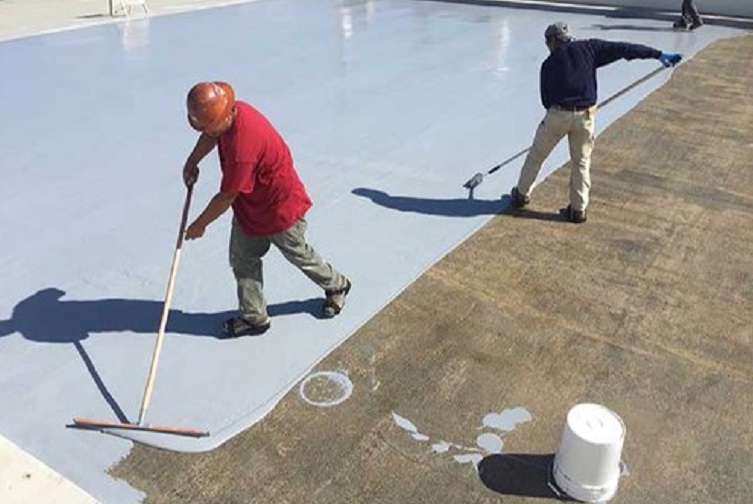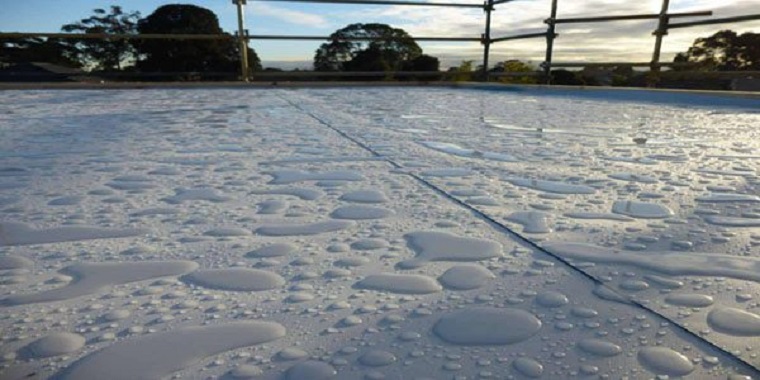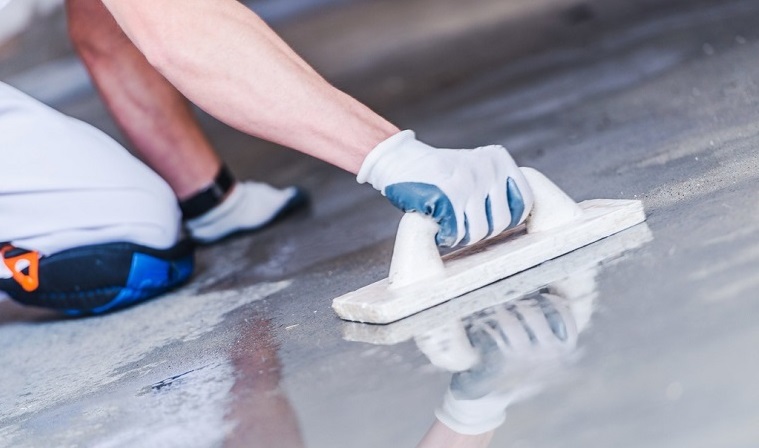One of the main requirements of the building is that it is dry.Waterproofing is a process that does not allow external water to penetrate into the dry areas of the building and water is removed from the wet areas of the building and also prevents energy wastage. Water leakage not only affects the life of the building but also creates unsanitary conditions inside the building.
Water proof is a type of sealing material that turns the entire cross-section of concrete into a hydrophobic body and is done to protect it from the penetration of water and chemicals. Water proof concrete is supplied with two physical states, liquid and powder.Its liquid type is a suitable additive for sealing and making all kinds of masonry mortars and grout impermeable. Waterproof powder type with micronized particle size is an effective waterproof filler to fill the empty spaces caused by the fraction of aggregate filler. By using this suitable filler, in addition to correcting the grain of the materials, the rheological properties of the fresh concrete mixture are also improved.
Applications of water proof concrete :
1_ Waterproof at the time of construction
2- Waterproofing of terraces, concrete pools, water tanks, septic
3_ Waterproofing old and damaged plastering
4_ Waterproofing the walls before repainting
5 _ waterproofing concrete, water and sewage treatment plants
6_ Sealing of underground structures and foundations
7_ Protection and sealing of water transfer channels

Waterproofing operation
Advantage and effects of water profiting :
- Creating resistance to UV rays, without yellowing
- Complete occlusion of all fine voids caused by the fractional aggregate filter
- Transferring filler hydrophobicity to concrete
- Removing water absorption and concrete permeability and water vapor disposal
- No effect on concrete compressive strength
- Maintaining sealing properties during the time of operation of structures
- Preventing the attack of selofati and alkalinization
- Preventing the penetration of chlorine ions and other corrosive chemicals into the concrete
- Very high spreading power and ease of mixing with concrete
There are two types of concrete sealants in the market that are used to perform sealing operations, they are :
1_ Shell sealants
2_ Penetrating sealants
Shell sealants protect the desired surface by forming an acrylic, epoxy or urethane coating layer.
Penetrating sealants create a chemical barrier by penetrating into the desired surface, which consists of compounds such as silanes, siloxanes, silicates, and siliconates.
Adhesives used in facade sealing
Polyurethane glue is one of the adhesives that is used to insulate the facade and has a high resistance against the penetration of water and moisture. This glue has very good dyeing and sanding ability.
Silicone glue is used for gluing glass and is also used for gluing tiles, ceramics and aluminum.
Acrylic glue is used for sealing to fill door and window seams, frames and cracks in plaster walls. Acrylic glue is also used in glass, wood and metal surfaces.
Acrylic adhesives used to seal the facade of the building are odorless and dry quickly. These adhesives have high flexibility and high resistance to UV rays from the sun.
What is rock resin and what is its use؟
Stone resin (rock sintering) is a clear liquid based on acrylic copolymers. It is also a very good protection for the facade of the building (facade covering), which can be implemented on all surfaces. Synthetic resin is used both as a waterproof material and as a gloss.
Characteristic property of stone resin:
1.Hydrophobizing surface 2.Beautification by keeping the appearance wet 3.Sun protection 4.Extending the life of surfaces
This product can be applied on the facade of the wall and ceiling building, but it is not suitable for ceramic floors and surfaces that are frequented.
How to use stone resin (sharpener) :
Fortunately, the gloss is a ready-to-use product that can be applied to the desired surface with a brush or with a low-pressure pistol. It is necessary to the extent Spray flow and it is also necessary to perform at least two layers in a row to get better results.
Eckerlicki waterprofs have a shelf life of one to three years. But epoxy, polyurethane and polyaspartic water profiles can work between 5 and 10 years.

Liquid waterproof
How to perform liquid and powder waterproof operations :
The surface should be free of all weak materials, dust, mold oil, paint, mud and. In general, the surface should be cleaned of any materials that prevent adhesion.In order to clean the surfaces, you can use a cleaner and a floor cleaner, then wash the surface well and give it a night or 24 hours until the surface is completely dry.
After the surface is completely dry, gently pull your finger over the concrete, if you see dust on your finger, it is necessary to wash again.
The work surface should be smooth and without porosity. Static pores and cracks should be repaired and filled using mortar containing latex glue or cement base repair.
Normally, the amount of water proof of concrete liquid for sealing bulk concrete is 2-2.5% of the weight of cement used.
The amount of water proof of concrete liquid calculated according to the grade of concrete should be diluted with 2 times the volume of concrete mixing water . Diluted additive to mixing concrete should be added gradually.
This product can be added to the ready mixture of concrete and after complete mixing, concreting can be done . It is suggested that for every cubic meter of concrete, at least 1 minute of mixing operation should be done.
Water proof liquid concrete can be added to batching or truck mixer during concrete production.It should be noted that the water proof additive of concrete liquid should not be poured directly on dry cement.
To use powdered waterproof, you should pay attention to cement diameter, sand granulation type and other factors. Because the amount of consumption depends on the type of sand granulation and the diameter of the structure. For concretes whose thickness is a maximum of 10 cm, 3.5% of the weight of cement used is considered; But in concrete whose thickness is 10 cm and above، 1.5 to 2% of the weight of cement used should be considered.
You can add powdery waterproof before concreting and mix with the mixer for 2 minutes until it becomes completely homogeneous. You can also add powder to the liquid before adding liquid to the concrete.
In the corners of the joints, after the implementation of the first layer, using the mortar that restores the seal, muscle is pulled and protected, and then the second layer is implemented.
Remember the following points in the concrete sealing process:
Before starting the process, check the weather conditions.
The sealant does not adhere to wet surfaces, so the surface must be completely dry.
The air temperature should remain constant between 10 and 30 degrees Celsius on the day of the operation and two days after that, so that the curing process of the sealant material can be done completely.
Waterproofing should not be done in direct sunlight.


